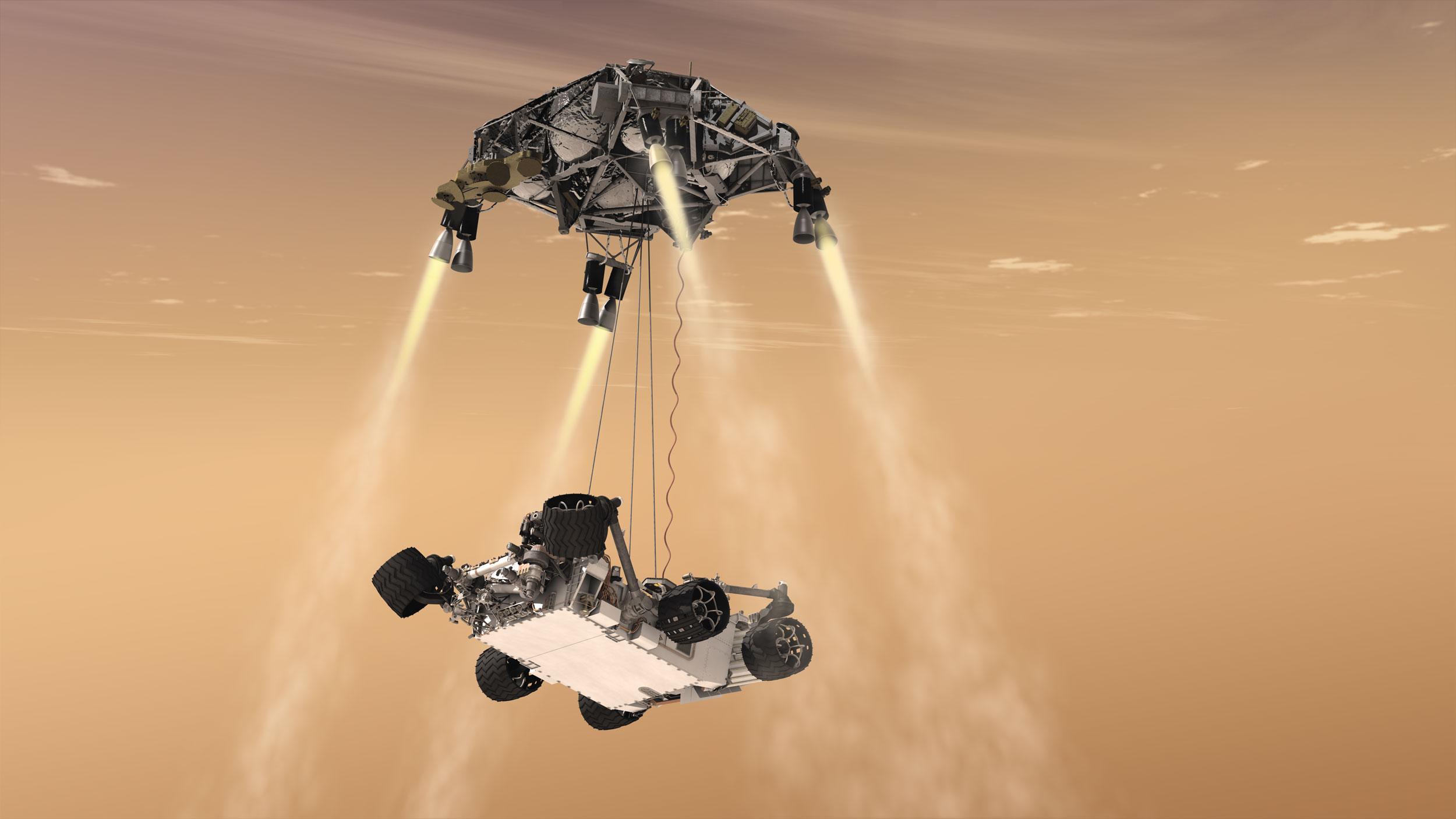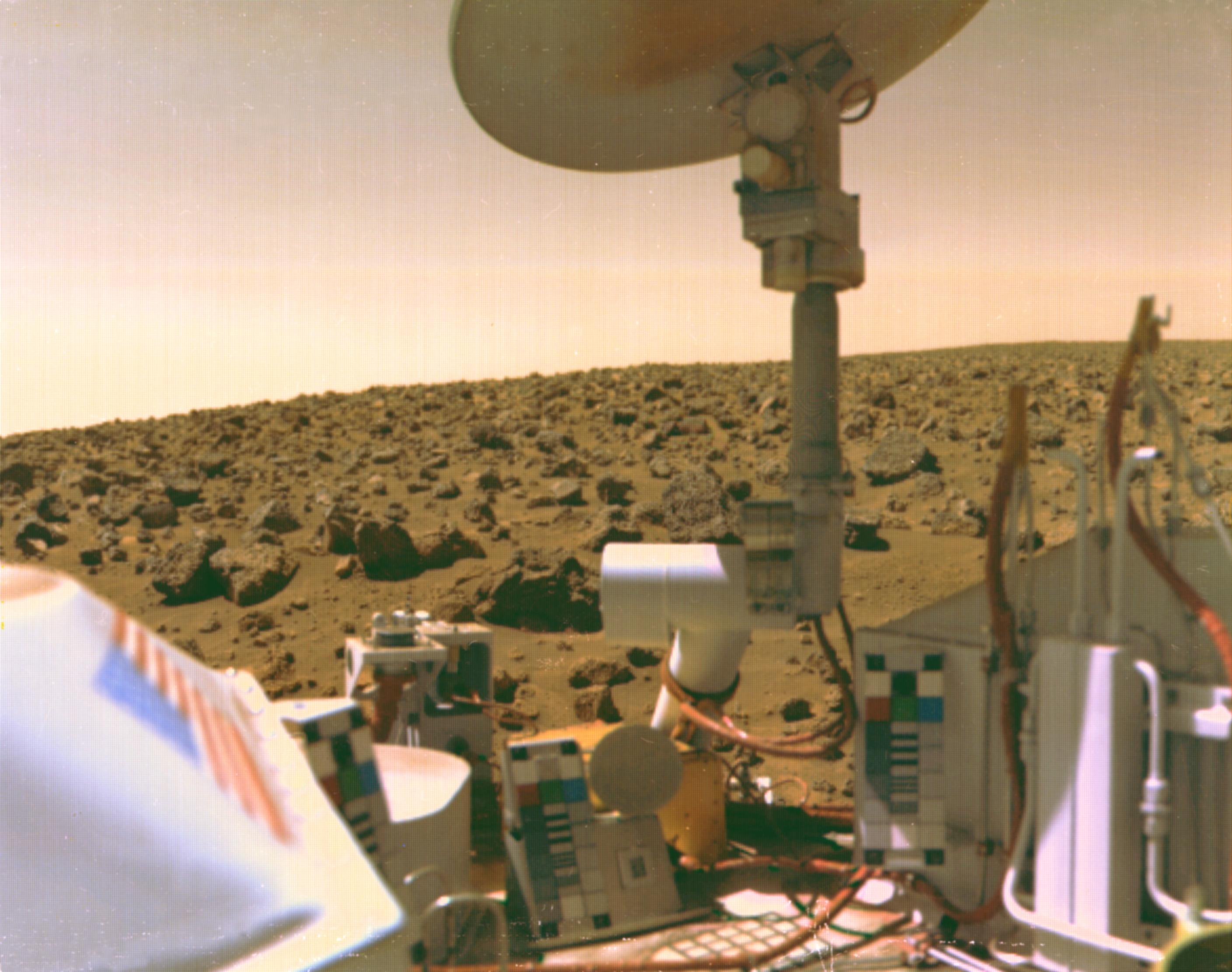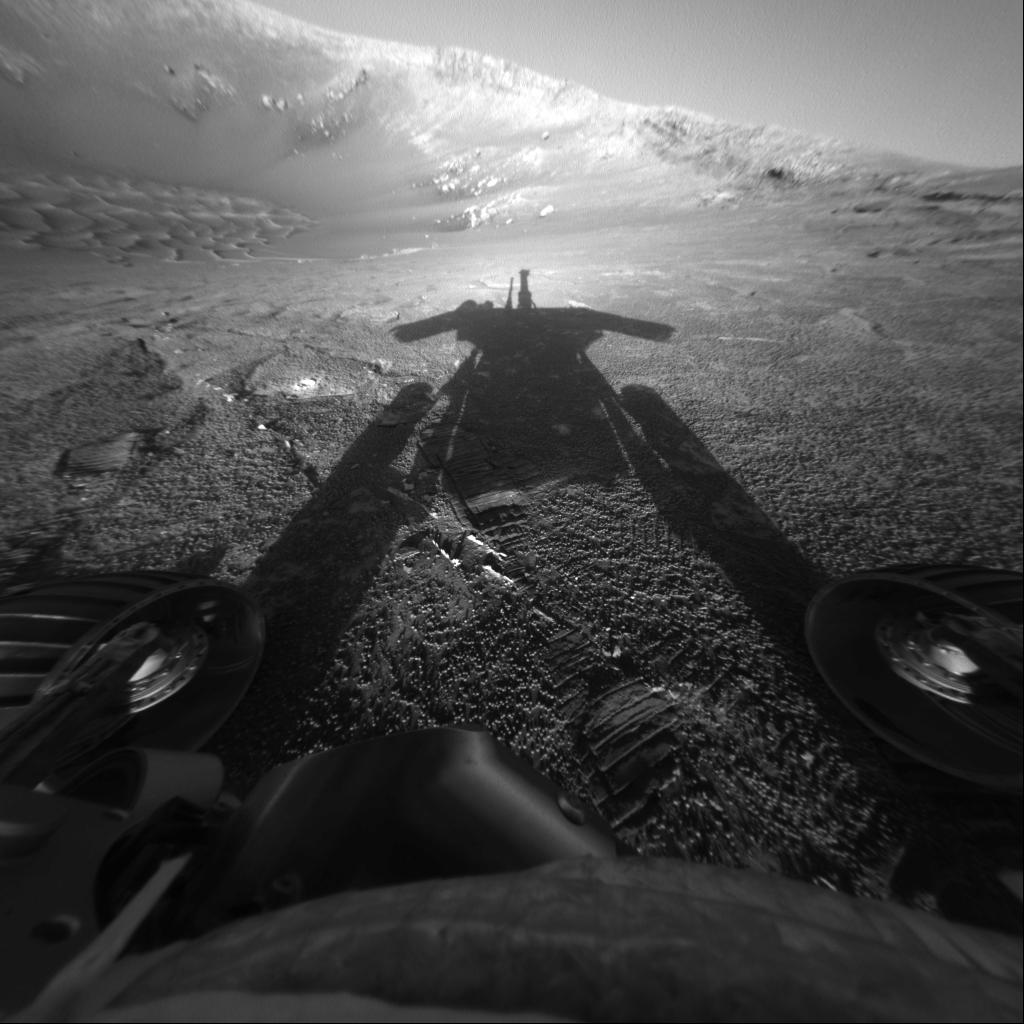Destination Mars: A timeline of Red Planet landings

NASA's newest Mars rover is about to make a touchdown as the agency starts a long quest to bring the first Red Planet samples back to Earth.
The Perseverance rover, carrying the Ingenuity helicopter for testing flight on Mars, is scheduled to touch down on Feb. 18. The rover's entry, descent and landing is similar to the Curiosity rover's "seven minutes of terror" in 2012, which includes a rocket powered sky crane to lower the rover to the surface.
The new rover follows a long heritage of landers, rovers and other craft that have attempted to explore the Red Planet.
Related: Mars explored: landers and rovers since 1971 (infographic)
Here's a look at all the previous missions that have attempted to land on Mars:
Mars 2: (FAILED) USSR, launched May 19, 1971. The Mars orbiter and lander arrived on Nov. 2, 1971, but returned no useful data, and the lander burned up due to steep entry.
Mars 3: (FAILED) USSR, launched May 28, 1971. The Mars orbiter and lander arrived on Dec. 3, 1971. The lander operated on the surface of Mars for 20 seconds before failing.
Get the Space.com Newsletter
Breaking space news, the latest updates on rocket launches, skywatching events and more!
Mars 6: (FAILED) USSR, launched Aug. 5, 1973. The Mars flyby module and lander arrived on March 3, 1974 but the lander failed due to a fast impact.
Mars 7: (FAILED) USSR, launched Aug. 9, 1973. The Mars flyby module and lander arrived on March 3, 1974 but the lander missed the planet.
Viking 1: U.S., launched Aug. 20, 1975. The Mars orbiter operated from June 1976 to 1980 and the lander operated from July 1976 to 1982.
Viking 2: U.S., launched Sept. 9, 1975. The Mars orbiter operated from Aug. 1976 to 1987, and the lander operated from Sept. 3, 1976 to 1980. Combined, the Viking orbiters and landers returned more than 50,000 photos.

Phobos 1: (FAILED) USSR, launched July 7, 1988. The Mars orbiter and Phobos lander were lost in Aug. 1988 en route to Mars.
Phobos 2: (FAILED) USSR, launched July 12, 1988. The Mars orbiter and Phobos lander were lost in March 1989 near the Martian moon Phobos.
Mars 96: (FAILED) Russia, launched Nov. 16, 1996. The orbiter, two landers and two penetrators were lost after the rocket failed.
Mars Pathfinder: U.S., launched Dec. 4, 1996. The Mars lander and rover, called Sojourner, landed on July 4, 1997 and communicated with ground teams last on Sept. 27, 1997.
Mars Polar Lander/Deep Space 2: (FAILED) U.S., launched Jan. 3, 1999. The lander and two penetrators were lost on arrival in December 1999.
Beagle 2: (FAILED) European Space Agency, launched June 2, 2003. Beagle 2 launched on ESA's Mars Express orbiter, which completed its prime mission in November 2005 and is currently on an extended mission. The Beagle 2 lander, however, was lost on arrival on Dec. 25, 2003.

Mars Exploration Rover Spirit: U.S., launched June 10, 2003. The Mars rover landed on the Red Planet on Jan. 4, 2004 for three-month mission to look for signs of past water activity on Mars, and found extensive evidence over many years. Ground controllers lost communication with Spirit in March 2010, and repeated attempts to awaken the rover failed. The rover far outlived its intended warranty, and is considered a success. NASA declared Spirit dead in May 2011.
Mars Exploration Rover Opportunity: U.S., launched July 7, 2003. The Mars rover landed on Jan. 25, 2004 for a three-month prime mission in the Meridiani Planum region. The rover has logged more than 20 miles on the Red Planet and was eventually felled by a lack of power due to a large sandstorm on Mars in 2018. The mission was declared over on Feb. 13, 2019, having lasted for 15 years — far beyond design expectations — and finding ample evidence of water on the surface.
Phoenix Mars Lander: U.S., launched Aug. 4, 2007. The Mars lander touched down on May 25, 2008 and dug through Martian soil to confirm the presence of water ice beneath the surface. Phoenix's solar panels suffered severe damage from the harsh Martian winter, and communication with the $475 million lander was lost in November 2008. After repeated attempts to reestablish contact, NASA declared Phoenix broken and dead in May 2010.
Phobos-Grunt: (FAILED) Russia, launched Nov. 8, 2011 on a mission to return samples from the Mars moon Phobos. The $163 million robotic probe suffered a crippling malfunction shortly after launch, stranding it in Earth orbit. Mission managers said Phobos-Grunt spacecraft's thrusters failed to fire in a maneuver that would have sent the spacecraft on to Mars. The spacecraft plummeted back to Earth and was destroyed on Jan. 15, 2012.
Mars Science Laboratory/Curiosity: U.S., launched Nov. 26, 2011. The $2.5 billion Curiosity rover landed at Gale crater on the night of Aug. 5, 2012, and has spent the last several year investigating Mount Sharp/Aeolis Mons to learn about the history of water across Martian geologic periods. The Mars rover is investigating whether the planet was ever hospitable to life, and has found ample evidence of organic molecules and water in the past decade. Its primary mission has been extended several times.
Schiaparelli (FAILED): European Space Agency, launched March 14, 2016 with a failed landing attempt on Oct. 19, 2016. Schiaparelli was a landing demonstrator meant to test future landing technologies for Martian missions. It arrived safely at the Red Planet with the Trace Gas Orbiter, but conflicting data caused the little probe to crash into the surface. Happily, however, TGO safely remained in orbit as planned and continues to collect data.
InSight: U.S., launched May 5, 2018 and landed Nov. 26, 2018. InSight is equipped to probe the interior of Mars and has found ample evidence of marsquakes. One of its larger goals is to better understand the history and formation of rocky planets more generally, using Mars as a test bed for our theories. Engineers spent two Earth years attempting to put a heat-seeking mole under the surface, but the effort ultimately was called off because the regolith (soil) was harder than expected. InSight is now on an extended mission, having met its primary mission goals.
Follow Space.com on Twitter @Spacedotcom and on Facebook.
Join our Space Forums to keep talking space on the latest missions, night sky and more! And if you have a news tip, correction or comment, let us know at: community@space.com.

Space.com is the premier source of space exploration, innovation and astronomy news, chronicling (and celebrating) humanity's ongoing expansion across the final frontier. Originally founded in 1999, Space.com is, and always has been, the passion of writers and editors who are space fans and also trained journalists. Our current news team consists of Editor-in-Chief Tariq Malik; Editor Hanneke Weitering, Senior Space Writer Mike Wall; Senior Writer Meghan Bartels; Senior Writer Chelsea Gohd, Senior Writer Tereza Pultarova and Staff Writer Alexander Cox, focusing on e-commerce. Senior Producer Steve Spaleta oversees our space videos, with Diana Whitcroft as our Social Media Editor.









